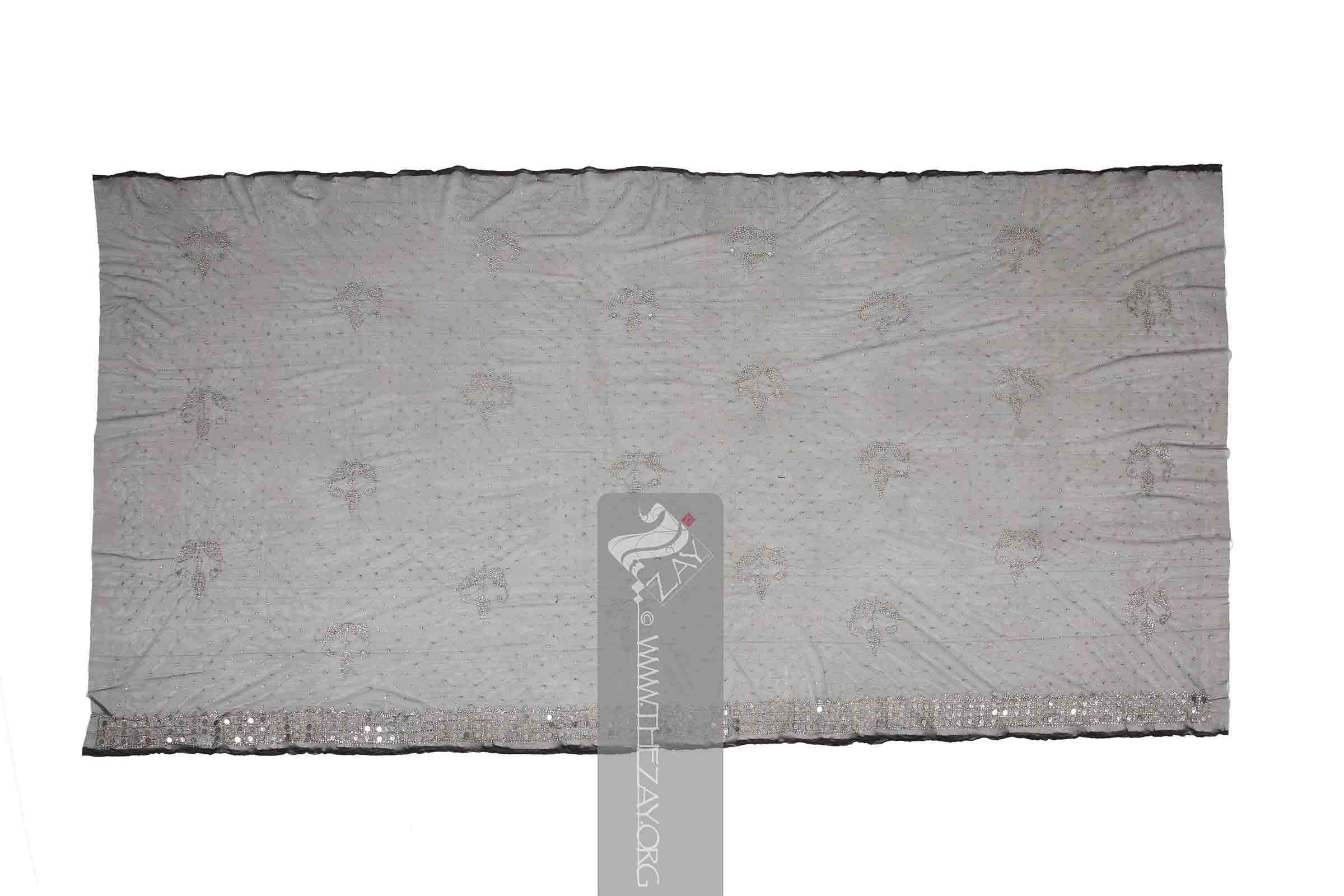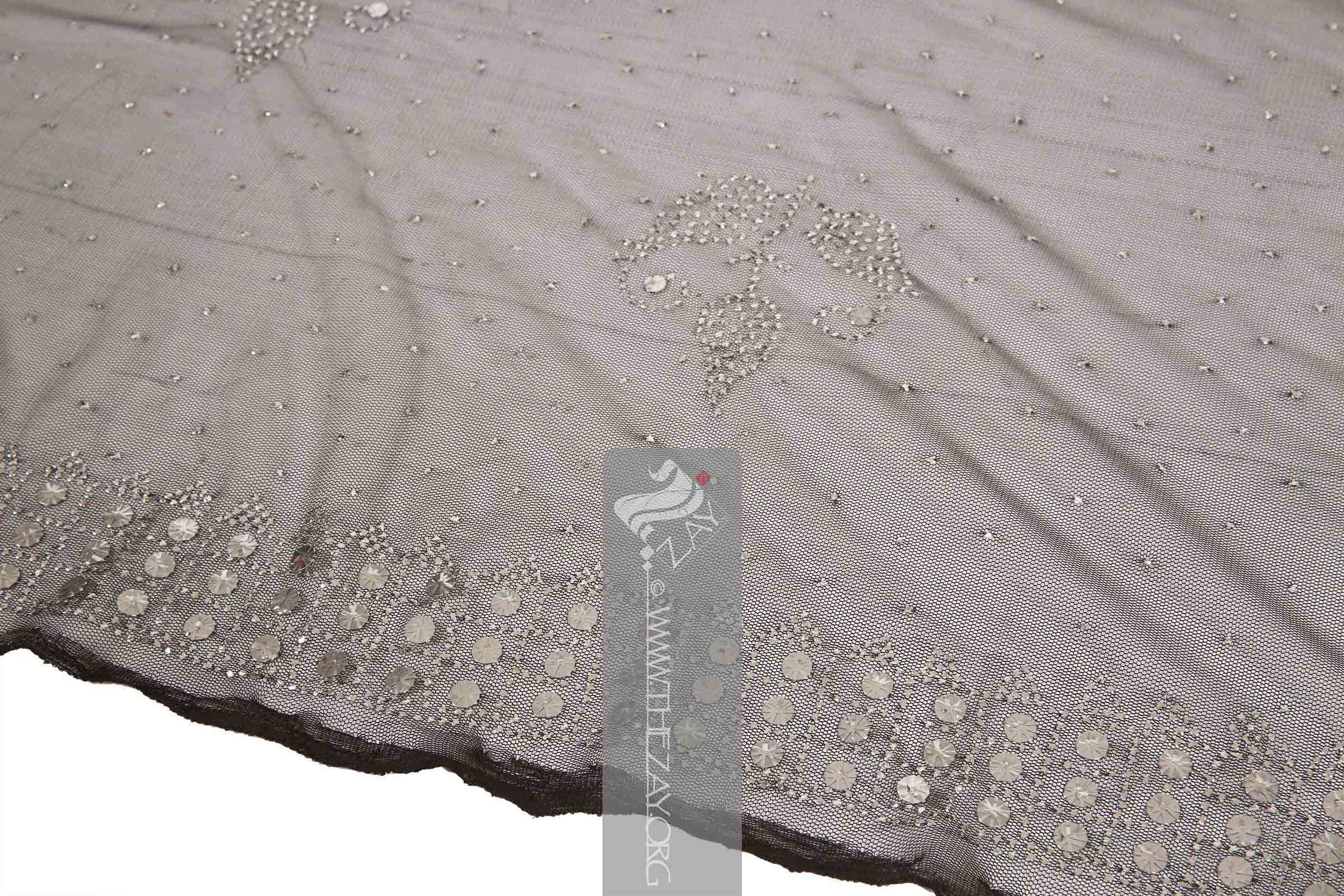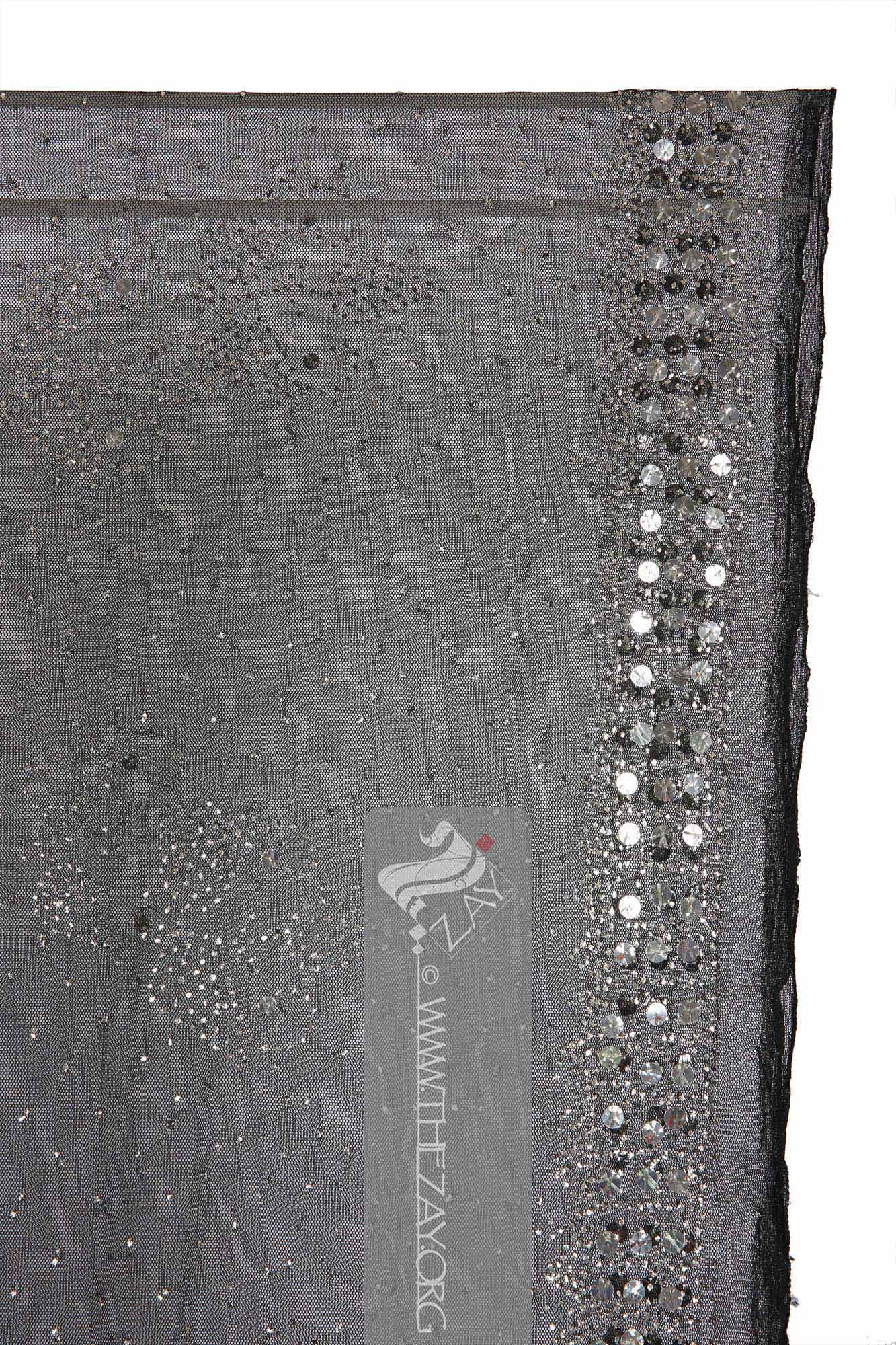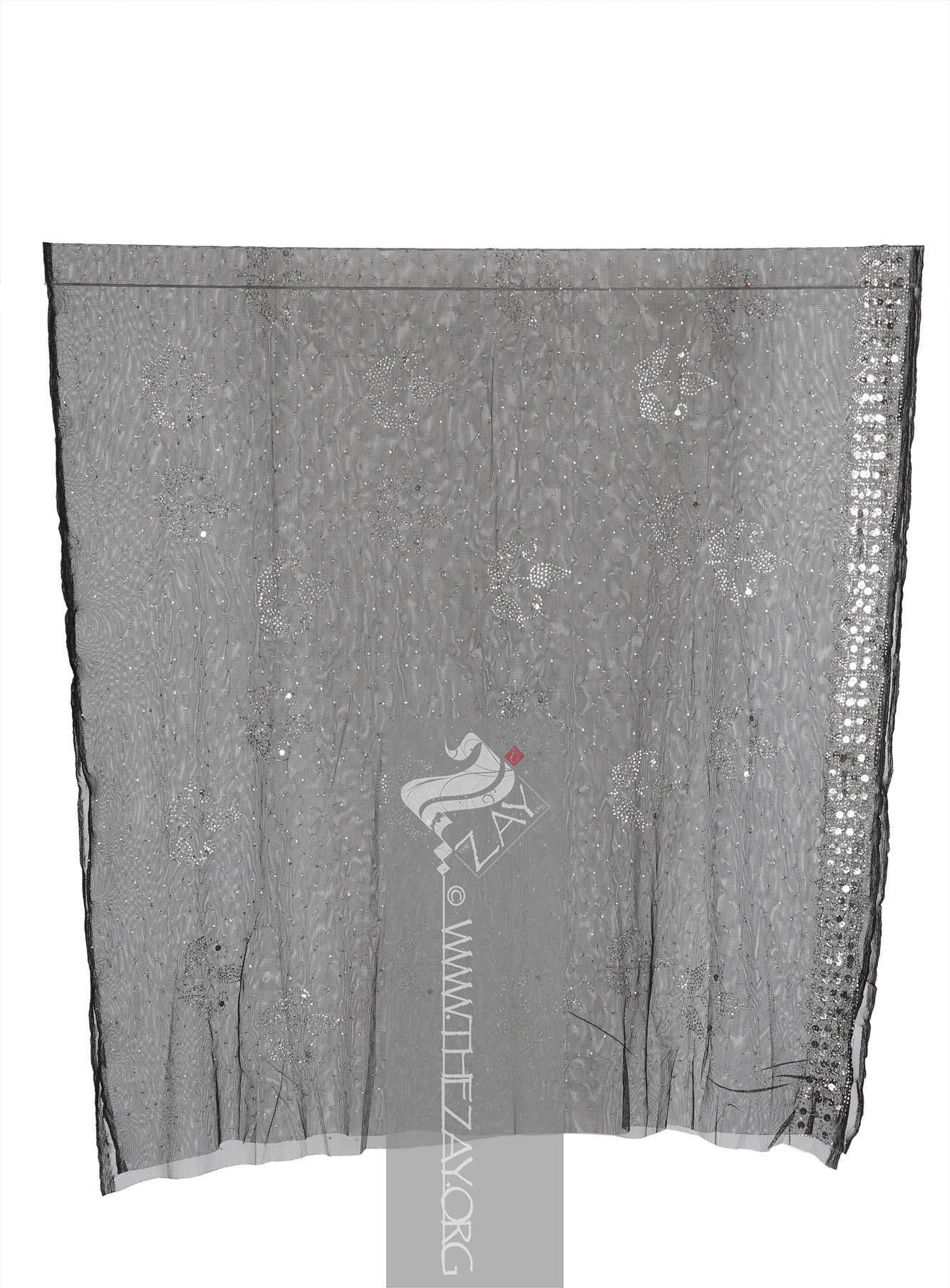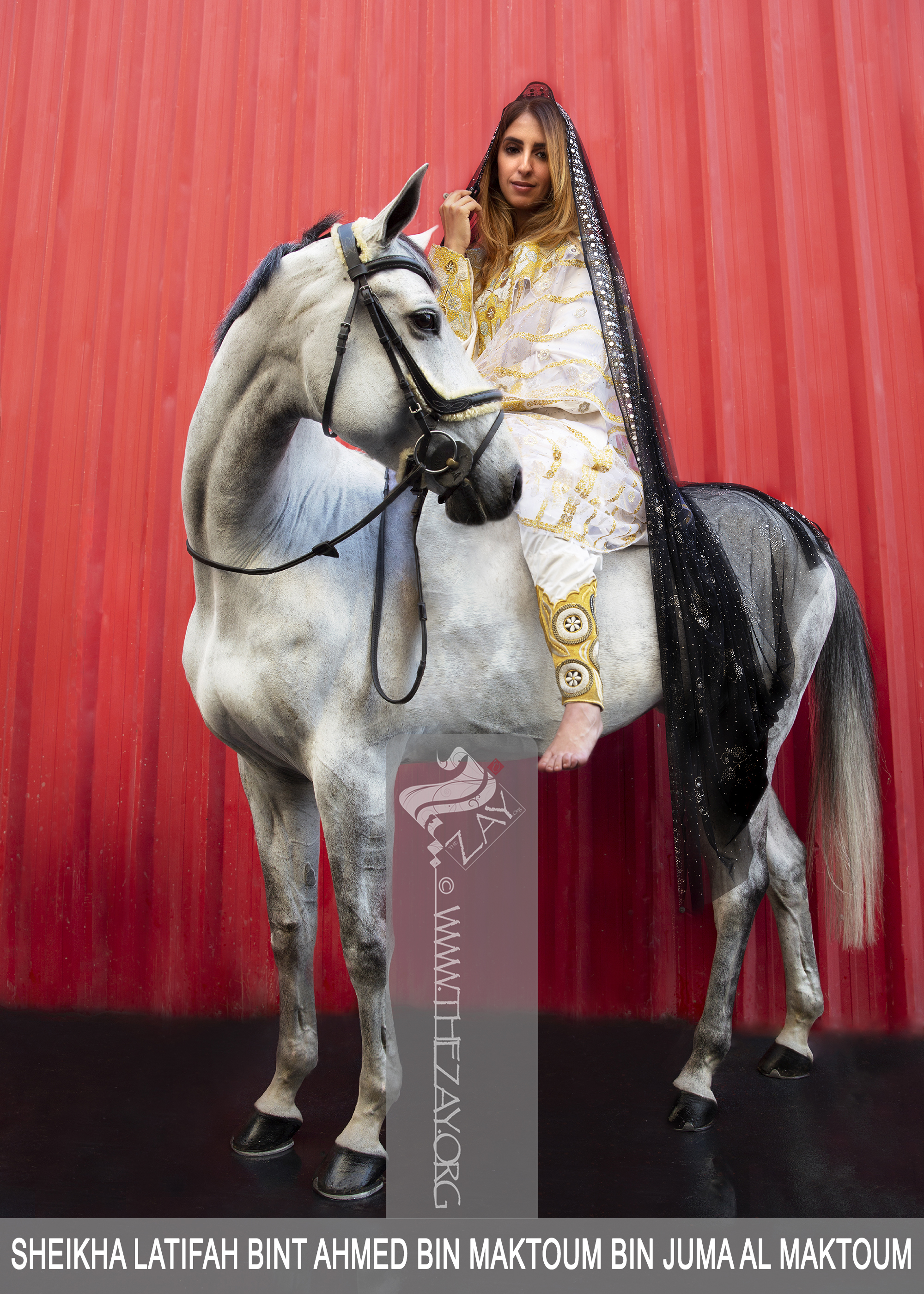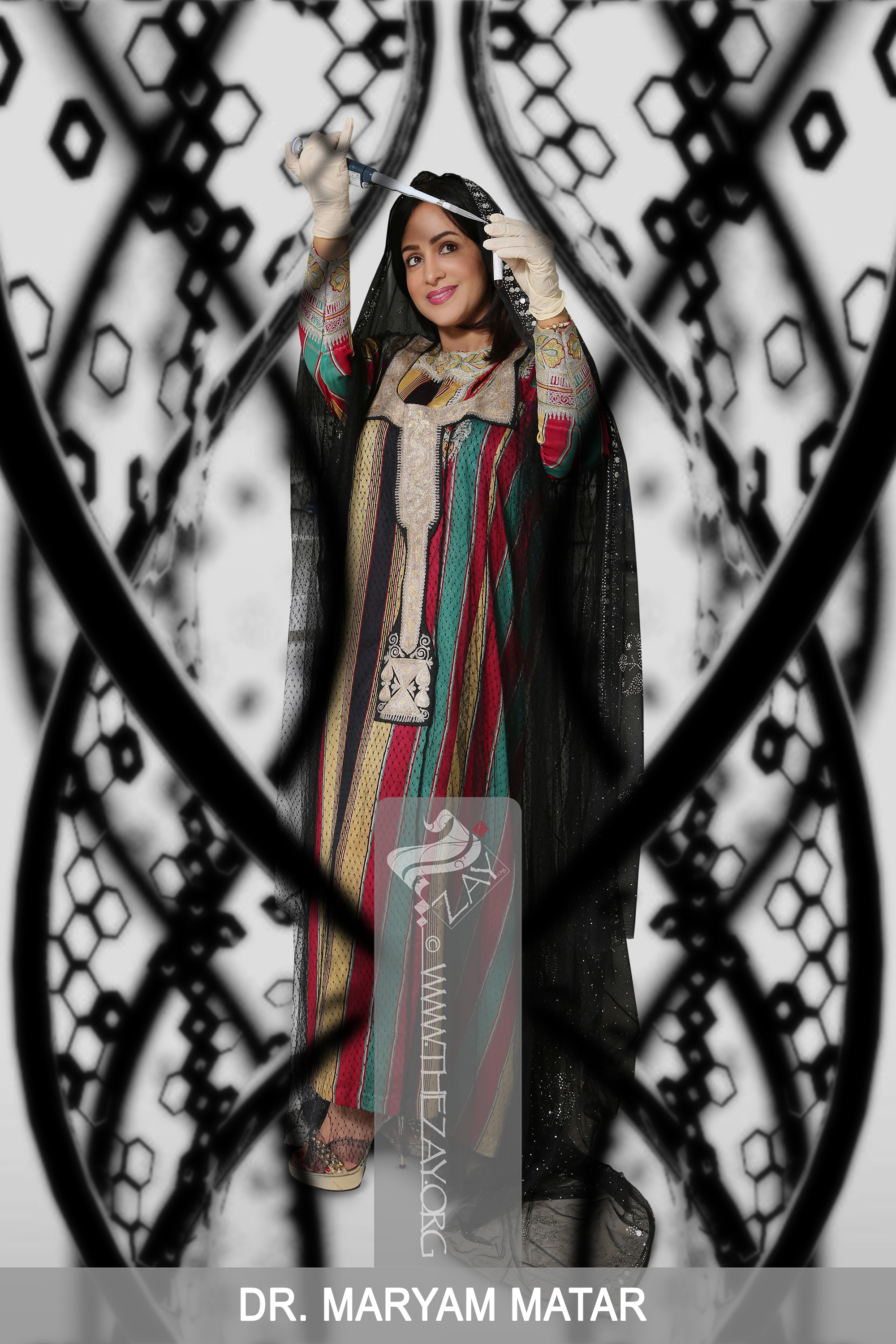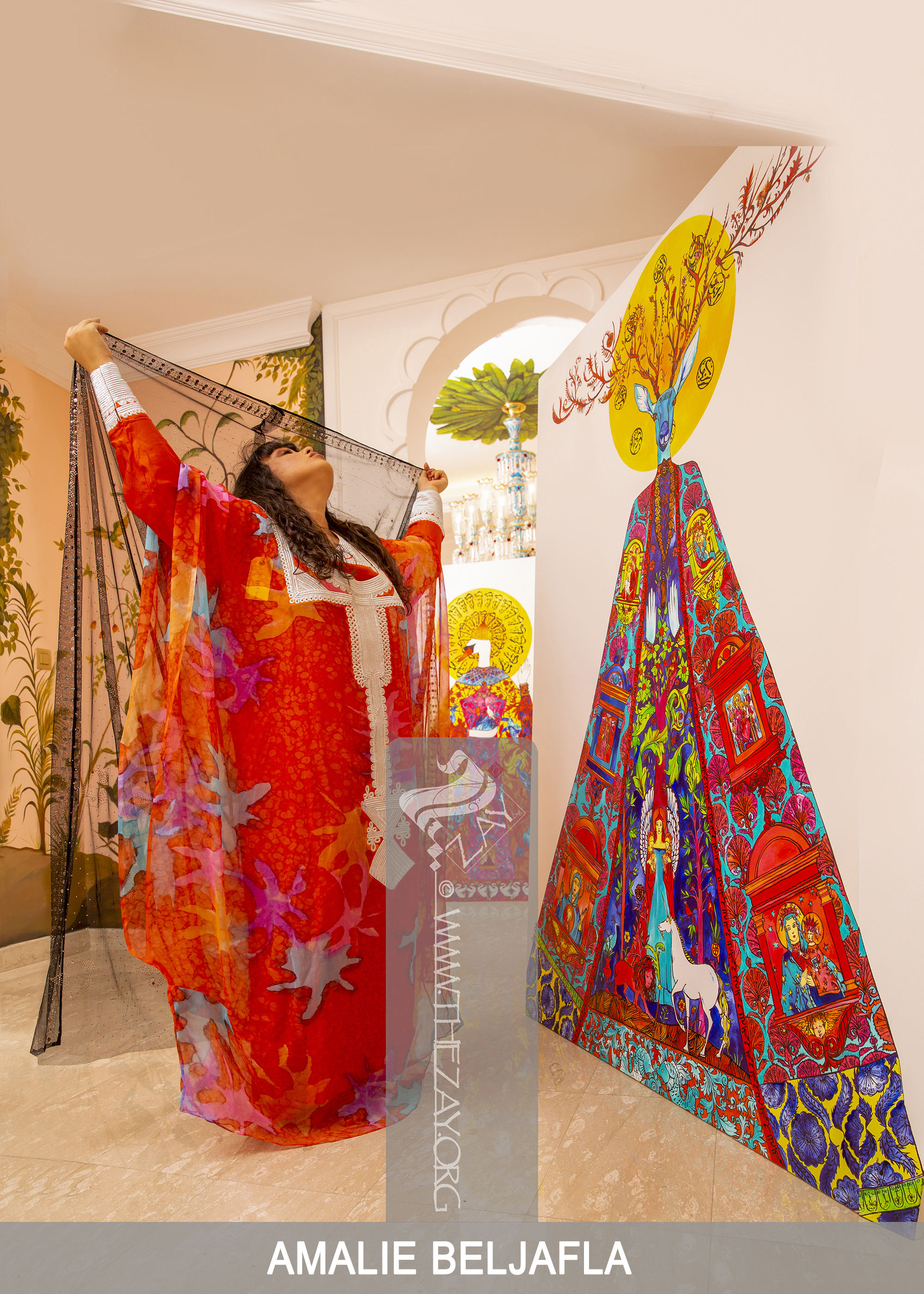Object NoteThe
Zay
Zay: (Arabic: costume, Pl. azyaā’), a set of clothes in a style typical of a particular country or historical period. Collection has six identical examples of this silver embellished veil (shaylah_mnaghadah) also known as (shaylah_talli) or (shaylah_khusah).
Object History This example was acquired in the 1980s at the shop of Abdullah
Khunji
Khunjī: Abdullah Hussain Khunjī is a renowned Emirati fabric merchant of Iranian origin. He opened the first specialised textile store in Abu Dhabi central market after returning from a trip to Switzerland companying the late UAE founding father Shaikh Zayed bin Sultan al Nahyan early 1970’s. Today he commands a fleet of stores and businesses across the seven emirates. in Abu Dhabi, one of the Emirates' oldest and most prominent fabric merchants.
Dr. Reem Tariq
Ṭariq: (Arabic; Synonym: tulle_bi_talli
Tūlle_bi_tallī: (French: Tulle – a city in France where fine material for veil was first made; Turkish: tel – wire; Synonym: tariq; talli; badla; khus_dozi ), series of small metal knots made on a woven net ground as embellishment. The term is commonly used in the North African Arab region specifically in Egypt.
; talli; badla; khus_dozi ), series of small metal knots made on a woven net ground as embellishment. The term is commonly used in the Levant Arab region specifically in Lebanon.
el Mutwalli
Dr. Reem Tariq
Ṭariq: (Arabic; Synonym: tulle_bi_talli
Tūlle_bi_tallī: (French: Tulle – a city in France where fine material for veil was first made; Turkish: tel – wire; Synonym: tariq; talli; badla; khus_dozi ), series of small metal knots made on a woven net ground as embellishment. The term is commonly used in the North African Arab region specifically in Egypt.
; talli; badla; khus_dozi ), series of small metal knots made on a woven net ground as embellishment. The term is commonly used in the Levant Arab region specifically in Lebanon.
el Mutwallī: Founder (CEO) of the Zay
Zay: (Arabic: costume, Pl. azyaā’), a set of clothes in a style typical of a particular country or historical period. Initiative, a public figure, speaker and author. An expert curator and consultant in Islamic art and architecture, interior design, historic costume, and UAE heritage. knew Abdullah from childhood as her mother was one of his early clients. Abdullah sold her six examples of this type of veil during the period Dr. Reem was studying for her Ph.D. because he felt that they would become rare one day and that she would appreciate their historical value. An accurate prediction!
Object FeaturesThis veil (
shaylah
Shaylah: (Colloquial Gulf Arabic), a length of fabric used as shawl, head cover or veil. Also known as (wigāyah) or (milfa’), generally made from sheer fabrics such as tulle (tūr), cotton gauze (wasmah
Wasmah: (Arabic: woad), is derived from the woad herb (wasmah) used to dye the cotton gauze black. It is mainly used for headcovers or veils and overgarments in most of the Arab gulf region.) (nidwah) or (Nīl), or silk chiffon (sarī).) is an example of a heavily adorned, yet more affordable veils that began to appear in the early 1980s. They were made in imitation of the expensive, pure silver straw adorned ones, that soon ceased to exist after the 1970s.
Although these silver imitation head veils were themselves a popular mass market product for a decade, and they are now quite hard to find. Today they are worn mainly by the elderly, or placed in a bride’s trousseau. As a result, they have become collectible in their own right.
This veil takes its name from the three-leafed
paisley
Paisley: (Scottish Gaelic, Pàislig: a town in Scotland), often called buta, boteh, amli, or kalgi in the subcontinent and kazuwah in Arabic, is a Persian tear drop motif with a curved end specially in textiles. Its popularity and subsequent local production in 18th century at Paisley are responsible for its nomenclature. (kazuwah) design that forms the principal motif referencing the Indian (butah) design and features a three-leafed flower of metallic silver coloured straw (
khus
Khūṣ: (Arabic: straw, sing. khūṣah), flat silver or metallic flat straw used in embroidery or tallī making.). The spaces in between the motifs are then filled with sprinkled dots in the same metallic silver straw (
mnaghad
Mnaghad: (Arabic: mnaqad: with coins, synonyms: mnaghadah
Mnaghadah: (Arabic: mnaqad: with coins). Since silver was a form of currency, it came to refer to silver adorned garments. The term refers to articles decorated with silver (tallī) straw (khūs) in small coin-like dots. In the Arab Gulf region, the terms (mnaghadah), (mnaghad) (nighdah) and (tallī) are often used interchangeably, with the (qāf) pronounced (gha) colloquially., naghdah
Naghdah: (Arabic: mnaqad: with coins, synonyms: mnaghadah, mnaghad, mnaghadah). Since silver was a form of currency, it came to refer to silver adorned garments. The term refers to articles decorated with silver (tallī) straw (khūs) in small coin-like dots. The (qāf) is pronounced (gha) colloquially., mnaghadah
Mnaghadah: (Arabic: mnaqad: with coins). Since silver was a form of currency, it came to refer to silver adorned garments. The term refers to articles decorated with silver (tallī) straw (khūs) in small coin-like dots. In the Arab Gulf region, the terms (mnaghadah), (mnaghad) (nighdah) and (tallī) are often used interchangeably, with the (qāf) pronounced (gha) colloquially.). Since silver was a form of currency, it came to refer to silver adorned garments. The term refers to articles decorated with silver (tallī) straw (khūs) in small coin-like dots. The (qāf) is pronounced (gha) colloquially.), and a geometric checkered design runs along the border on one of the longer edges of the veil, framing the wearer’s face when the article is worn.
This type of veil is generally draped off the head covering the upper body from the back, it is then gathered and tucked on each fore arm to firmly frame the face with the shimmeringly slivery adornment. If worn by a bride on her wedding night it is pulled down the forehead covering revealing just silhouette of her face to the gazing female guests.





